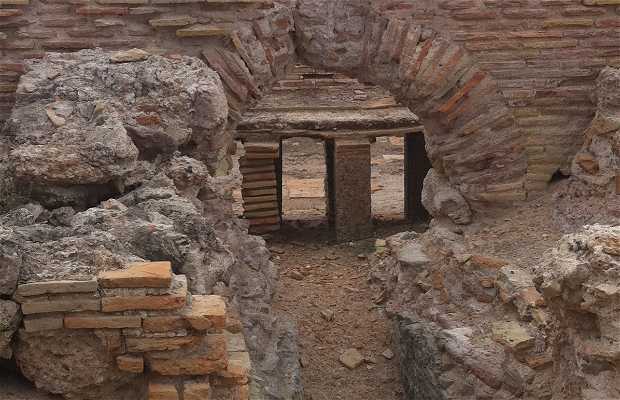The Nora Stone
Nora was an ancient Punic-Phoenician and later Roman settlement on the rocky promontory of Capo di Pula. It’s located permitted the sea-faring Phoenicians enjoy a safe harbor, sheltered from the winds. Despite the fact that the area was most likely settled since the Nuraghic period, there are currently few archaeological remains that make the area feel like a typical nuraghic site. The famous Nora Stone, dating to the 8th or 9th centuries BC, was found on a nearby beach and contains Phoenician script mentioning the name Sardinia (“SHRDN”) for the first time. It is the oldest Phoenician script ever found west of Tyre, Lebanon.
The city underwent great development during the Roman era, as witnessed by its amphitheater (which still hosts summertime plays and musicals to this day), public baths, lavish homes, temples (especially that of Eshmun), and a wealth of beautiful mosaics. To wander the narrow streets is akin to going back in time, even though it’s estimated that half the city is still unexcavated. Unfortunately, the city has suffered pillaging over the years and many stones we reused to built the tower in nearby Coltellazzo.










